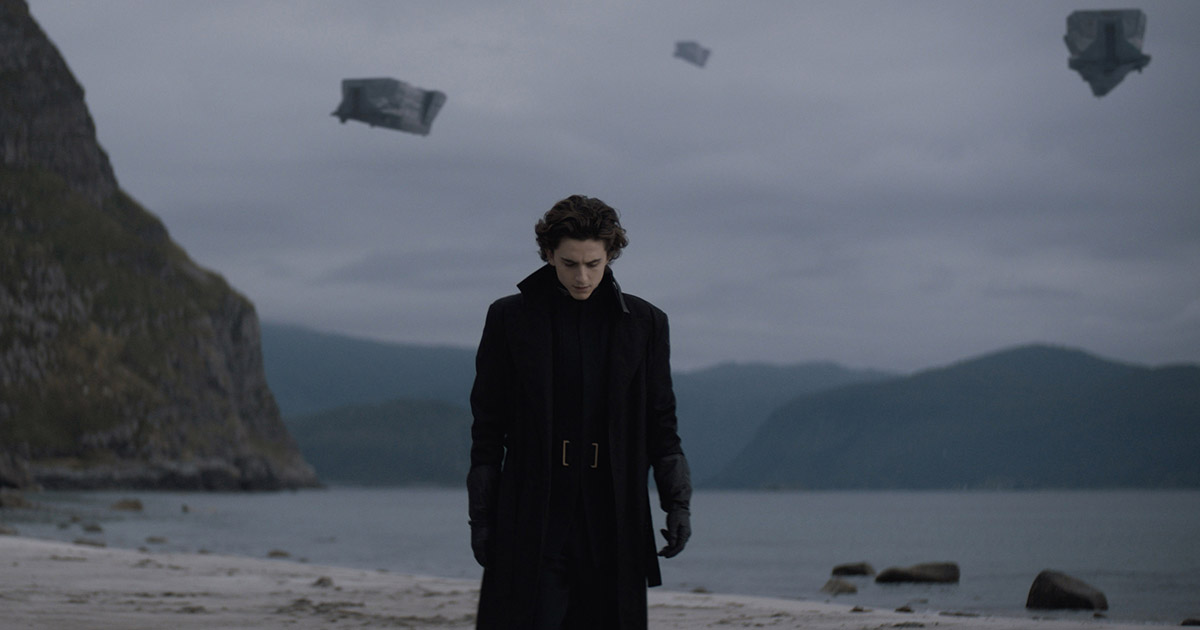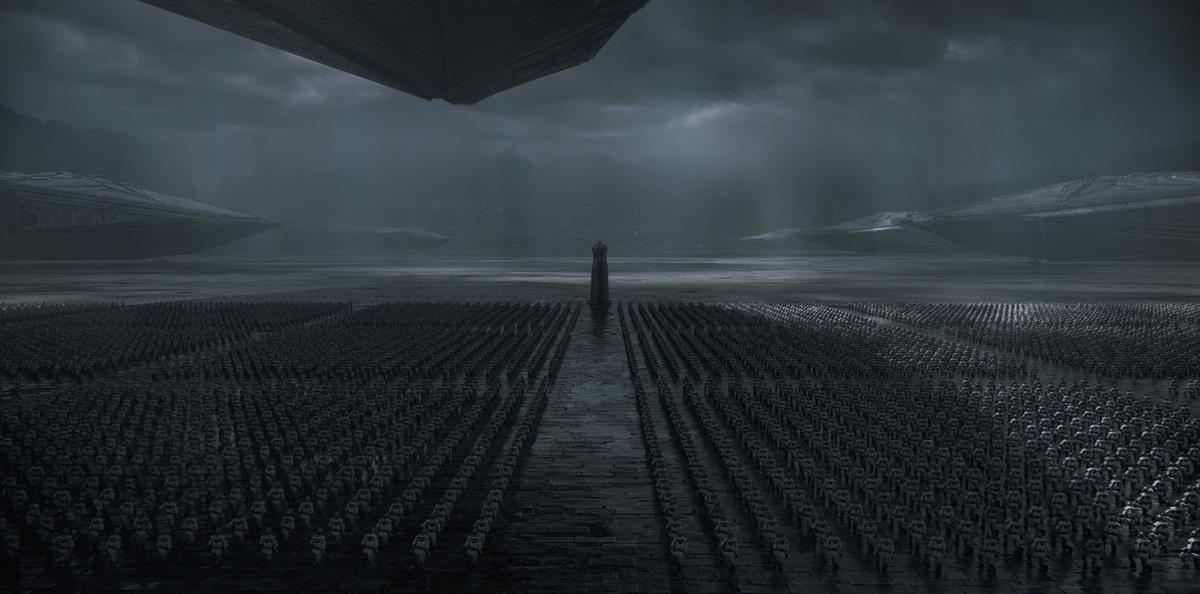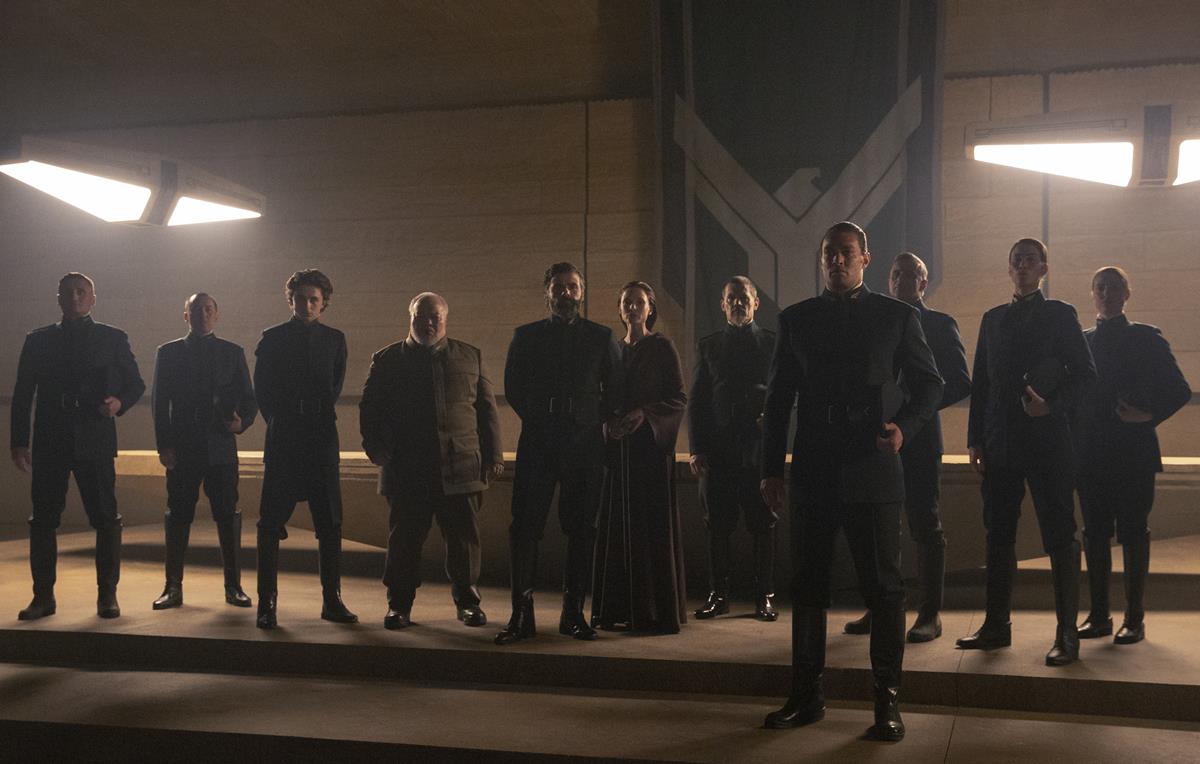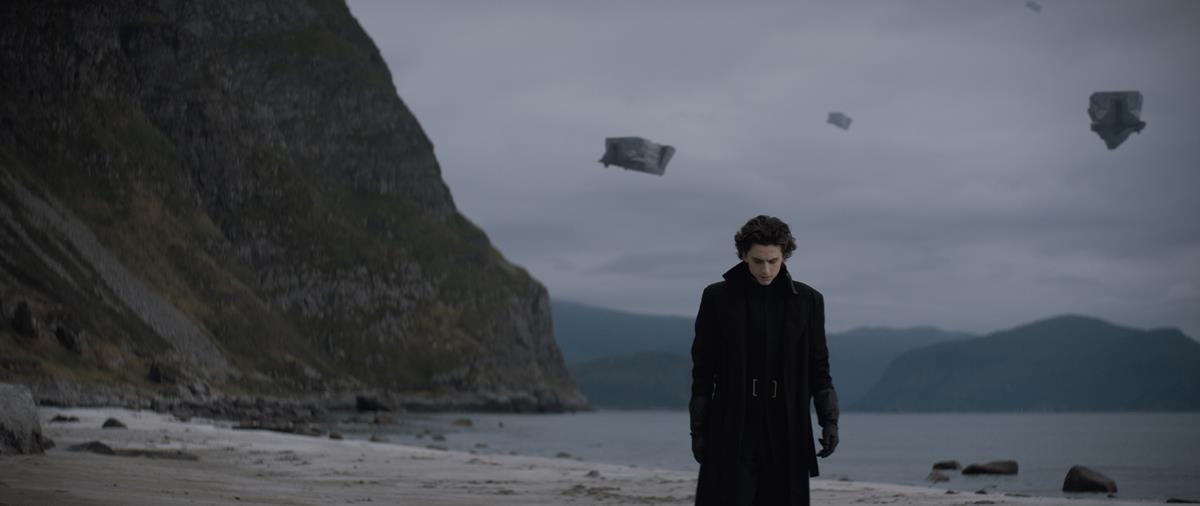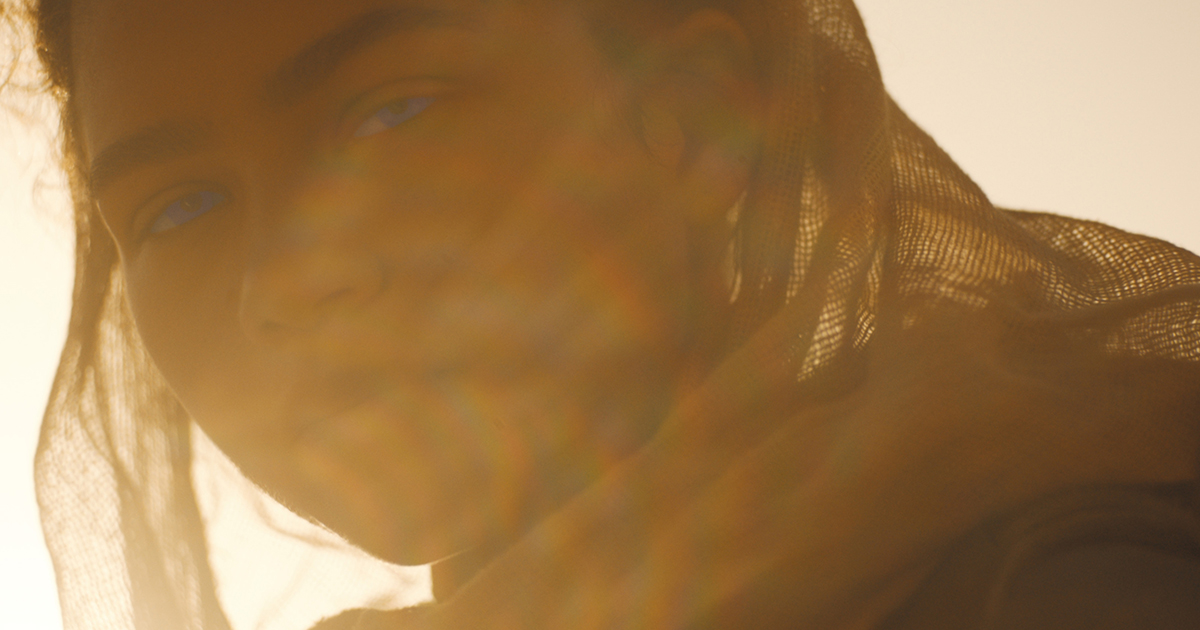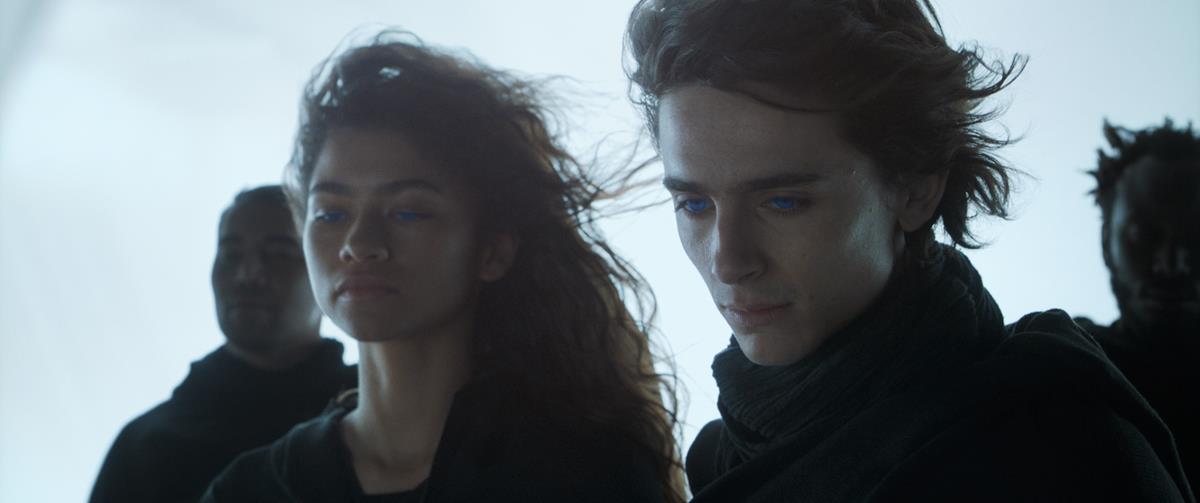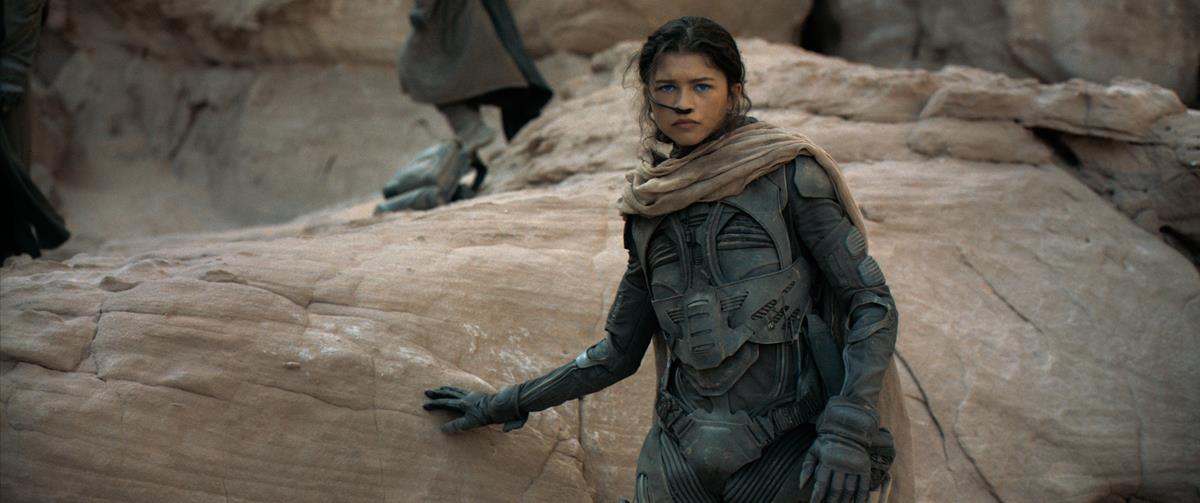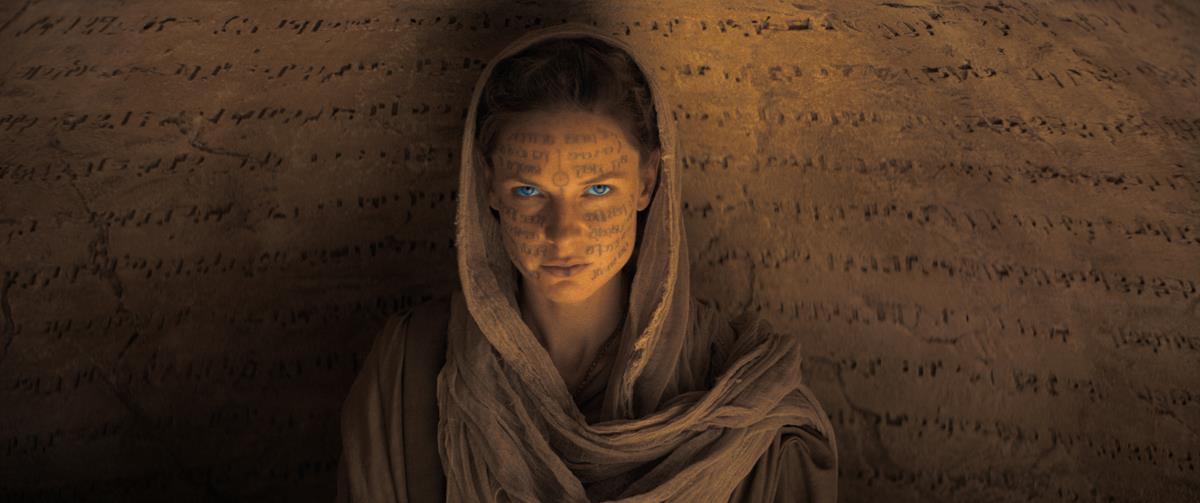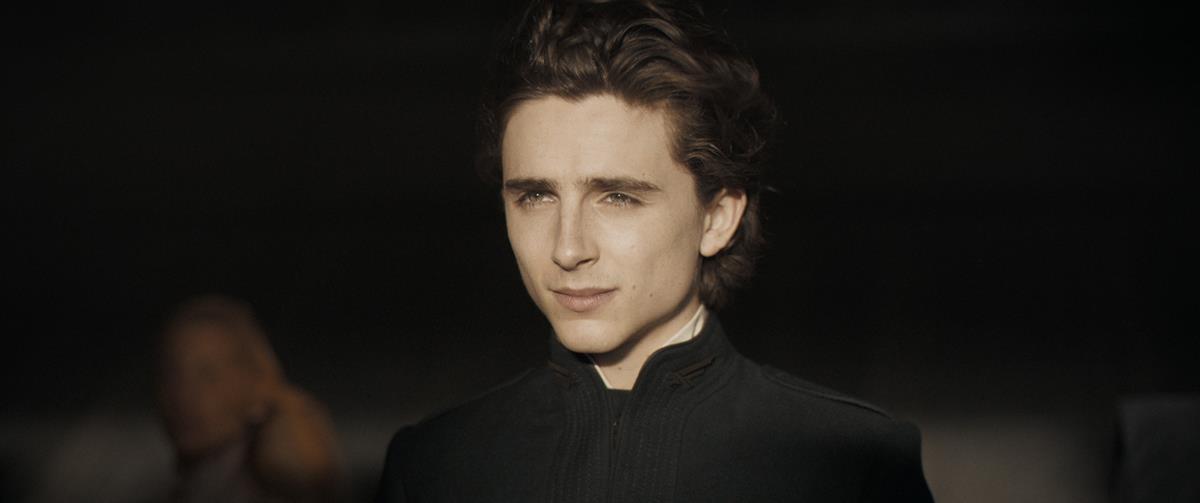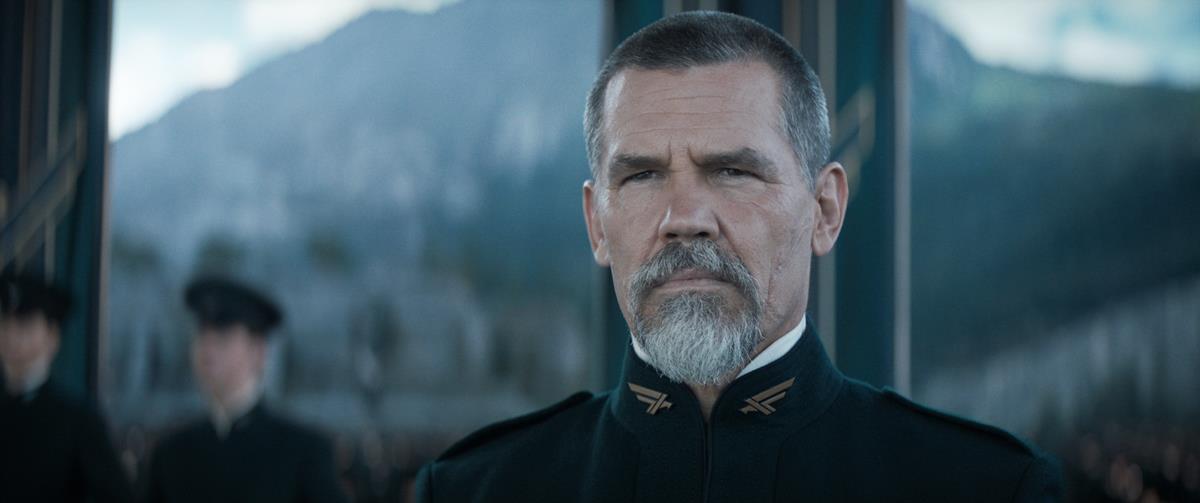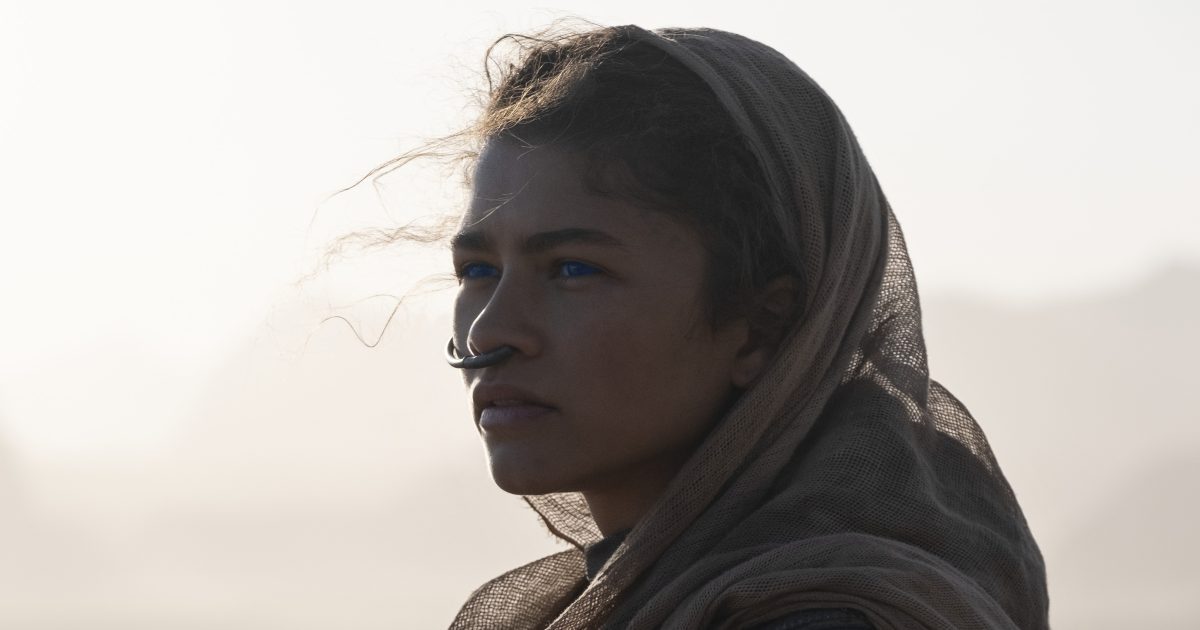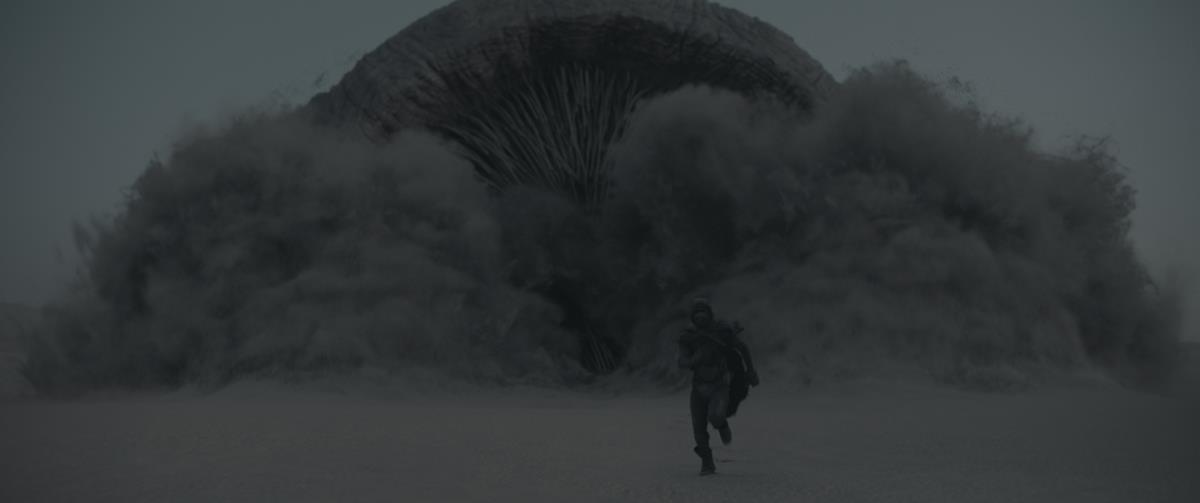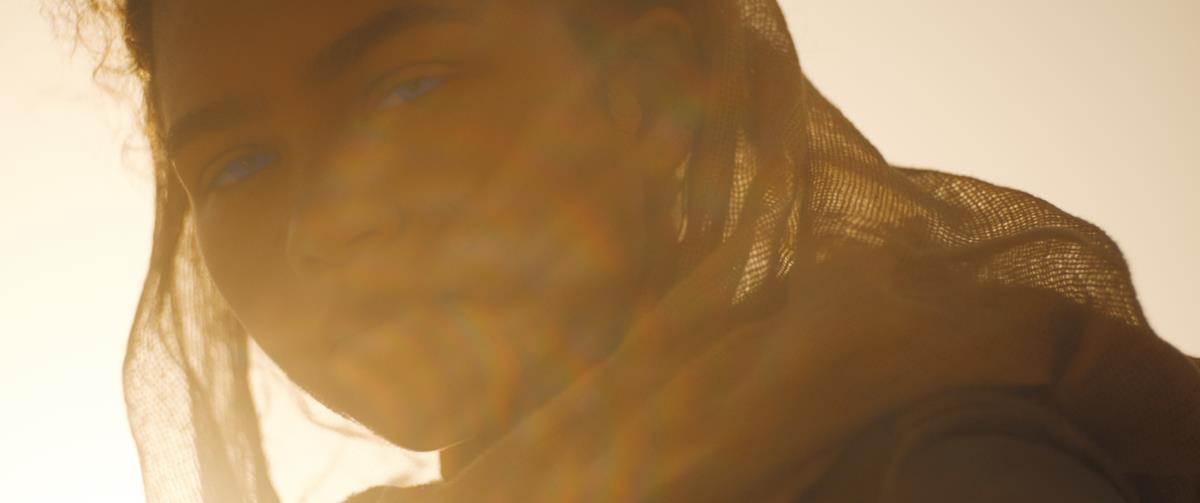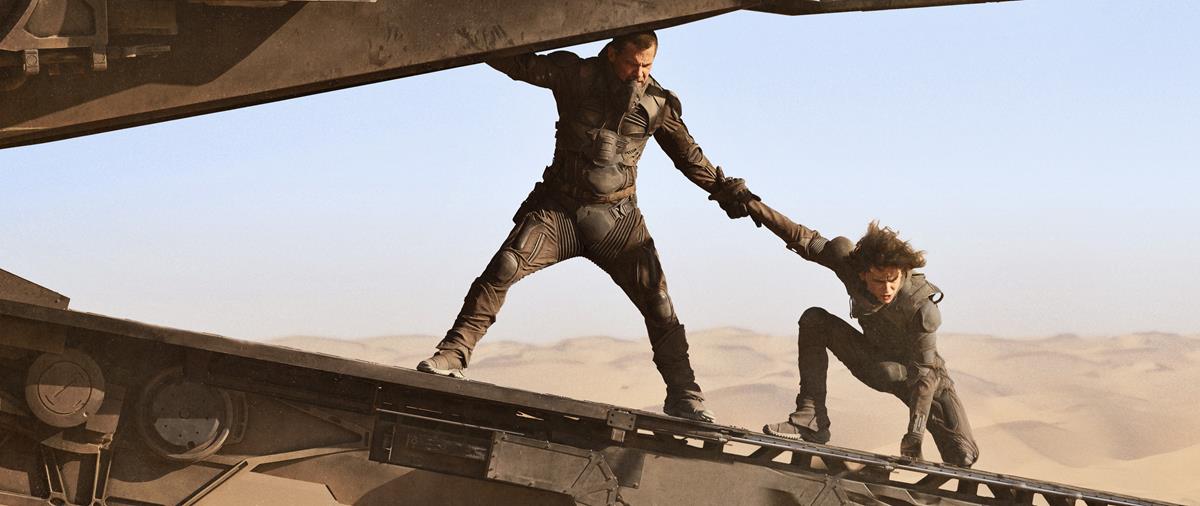
Editor Joe Walker’s presence in the same edit room as director Denis Villeneuve was something that they both took for granted and reveled in before they were forcibly separated by Covid. Walker described it in an almost spiritual way to Frame.io’s Art of the Cut.
“Being in the room with Denis, the edit somehow happens in the air between us. It’s partly periods of identifying what a problem might be and then finding a solution which often takes a shorter amount of time than finding what the problem was. It’s really finding why something isn’t ticking as it should do.
“An edit room has to be a safe space for a director. You really need to touch base with the core decision to make the film at some point — you need to decide what kind of film you want to make — in that room.
“There will be days when stuff doesn’t seem to be happening but then masses of stuff happens in one afternoon. Especially when you have a team close by to help with assets like a Bene Gesserit singing voice or a Charlotte Rampling soundalike. It’s a great team that can turn on a sixpence to serve these bursts of creativity.”
Walker has been Villeneuve’s go-to editor for Sicario, Arrival, Blade Runner 2049 and Dune parts 1 and 2. For Dune, he had started off on the set in Hungary but as soon as the pandemic struck split from the team to go home. Interestingly, he has a sideways slant on the time spent in lockdown. “The pandemic was really kind to us inasmuch as it gave us the time to really think without the great heat of a schedule bearing down on us.
“It gave us a few months to dream a little bit and follow out instincts and develop things which we did a great deal.”
Walker sees that the extra time he had to think through the edit was particularly helpful in introducing and building the constellation of characters in the film. “You have to familiarize them to the audience properly before you test them. The extra time gave me the chance to really bed them in.”
Walker basked in the forced working from home as part of the lock down. While some might be climbing the walls being away from a collaborative space, he welcomed it. “Rather than staying awake in the middle of the night worrying about part of the work I hadn’t finished from the day, I would get up and go and cut something for half an hour, solve the problem and then go back to bed.”
READ MORE: Art of the Cut: Behind the Scenes of “Dune” with Editor Joe Walker, ACE (Frame.io)
He also used all the methods in his playbook to find his way through the dense sci-fi tale. “One of the tricks I’ve been using is to ‘flop’ the image. It’s just for myself as other people find it very distracting. At one point I even turned the film black and white with a flopped image. This is late stage, if you do this too early then you’ve blown it.
“But basically by flopping the image and turning it black and white, your brain takes it a different way and it feels like a fresh viewing. It’s a cheat. A film has its moments that you become attached to because they’re very pleasurable. It’s a bit like knowing how a song goes once you heard it ten times. Sometimes you have to remove that to get a sense of the audience.
“You have to asked your imaginary audience ‘what question are they asking now,’ ‘have we successfully answered that question,’ ‘did we successfully pose the question.’ All of those things are the most important things an editor can do.”
One of the huge challenges for Walker was to find simplicity and economy in the film for the 800-page book they were faithfully adhering to. “We also had to pay our dues to the book and to the depth of the imagination that Frank Herbert originally had.
“As an editor you could easily find low-hanging fruit to cut from if you wanted to shorten the film but you would have lost a lot. Including the massive level of world building that is evident. As an editor it would be foolish to disregard that.
“Dune, if nothing else, is one massive work of rhythm. My background is in music and when I was composing, it was still pushing a mouse around. So not too dissimilar. You start developing a sense of what’s foreground, what’s background, there are lots of similarities but the main thing is pace and rhythm.
“That rhythm could be the sound of a thumper or it could be a raising of an eyebrow, or the rhythm of the cuts itself or the bigger, tectonic plates moving underneath the story.
“This film starts quite gently and builds up your interest in the characters and then accelerates and becomes very dynamic.”
With Greig Fraser’s cinematography, including a large section of IMAX footage, Walker felt the edit needed to show restraint on the cut count. “The film has been designed as a cinematic experience so if you’re too busy driving the cuts, it’s exhausting. If you’re at the front of an IMAX screen looking at something moving around too fast, it’s nauseating. The film does have dramatic and violent scenes but you also want to look in to the characters and feel something.”
More insights into Walker’s editing process and why he loves working with Villeneuve so much is that he shoots single camera. “There’s not so much footage to go through and you begin to learn the dailies. That means you can remember certain little scenes that could get you out of jail. Famously the opening of the film Gladiator, when he’s running his hands through the corn, is a B-Roll shot. Someone just remembered that it had been shot and now it’s iconic.”
Cortex Video also has an interesting video essay delving into the details of behind-the-scenes featurettes and concept art included in the 4K Blu-ray release of Denis Villeneuve’s Dune:


